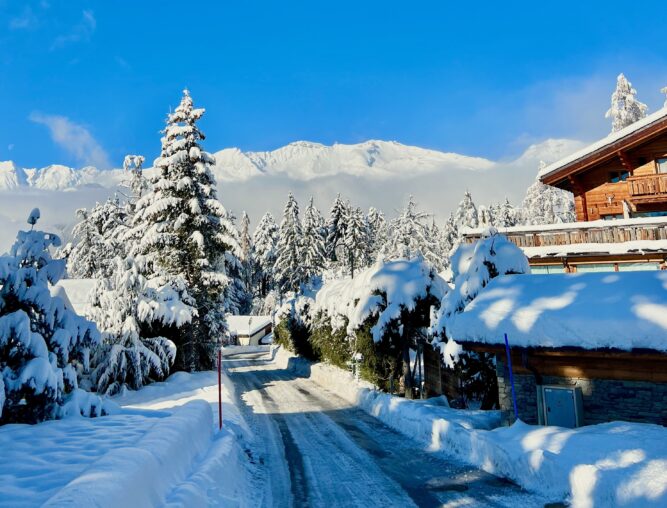The Valais, a tourist region par excellence, has a high proportion of secondary residents (R2), who are often well integrated, well beyond a few seasonal vacations.
The noise of numbers:
While the 15,000 inhabitants (R1) of the Haut-Plateau already form a mountain town, there are also 40,000 secondary residents.
The District of Sierre, which stretches from Val d’Anniviers to Crans-Montana, has a population of 52,000 (R1), plus 65,000 secondary residents (R2), for a total population of up to 117,000 on a regular basis.
So we’re a long way from hotel-based tourism (which is nonetheless added to the mix) whose interests are those of itinerant visitors, while the R2 represents a real population attached to its second region, its second life, a fully resident, part-time life.
Institutional logic:
Nevertheless, the R2 is kept silent. Citizens decide. You can’t be a citizen everywhere!
Of course, the R2 thinks it’s important to be a member of an Owners’ Association, which will provide him with an instrument for dialogue with those who govern his home, but is that really enough?
Of course, the political authorities tell themselves that they are at the service of their citizens, their electors and their Primary Assemblies, but is that enough?
Isn’t it sometimes like the rails of a train, which cross very little?
If we try logical reasoning, confronted with the democratic objective, we come to a dead end: we won’t vote twice, that’s obvious.
Help from History:
So when reason can’t be right, let’s look to history: our ancestors may have found answers to similar questions.
We often think of Switzerland in 3 tiers: the Commune, the Canton, the Confederation. For 185 years, followed by 210 years, the Valais also thought in terms of 3 levels, but in its own way (*): the Commune, the Dizain (today’s District), the Grand Conseil. Today’s Dizain has only advisory and coordinating powers. In theory, that’s not much, but in practice, who’s to say that a power of influence isn’t? Aren’t decisions the result of an algebraic sum of influences?
Under these conditions, the Dizain level can be an answer to a better representation of secondary residents, owners in general and their Associations in particular. Restoring broader representation at district level can present a new space for dialogue, understanding, interaction and action, necessary for residents but also for politicians to enrich themselves with influential forces in the right directions.
An Assembly, why not?
This representation, reviving the Dizainales assemblies in an updated version, is neither in competition with the often close links between Communes and their Owners’ Associations, nor with those between the Fédération Valaisanne des R2 and the Canton, but is at the level of the “missing link” for a harmonious democracy that should not leave such an important part of the population on the sidelines.
To achieve this, it is essential that the 5 homeowners’ associations in the Sierre district work together and rally around the Conference of Presidents and the Prefect to write this new page in the history of the Valais and build the model for it.
Towards modernized governance:
The Assemblées dizainales, a historic model for completing the Valais governance of tomorrow, would thus embrace modernity by welcoming a population that is currently silenced, but which represents more than half of the economy.
What if the Valais became a laboratory for democracy, hybridizing past and future?
At VALPIC, we’re ready!
Jean
February 2025
(*) cf article Valpic: Les Dizains en Valais

